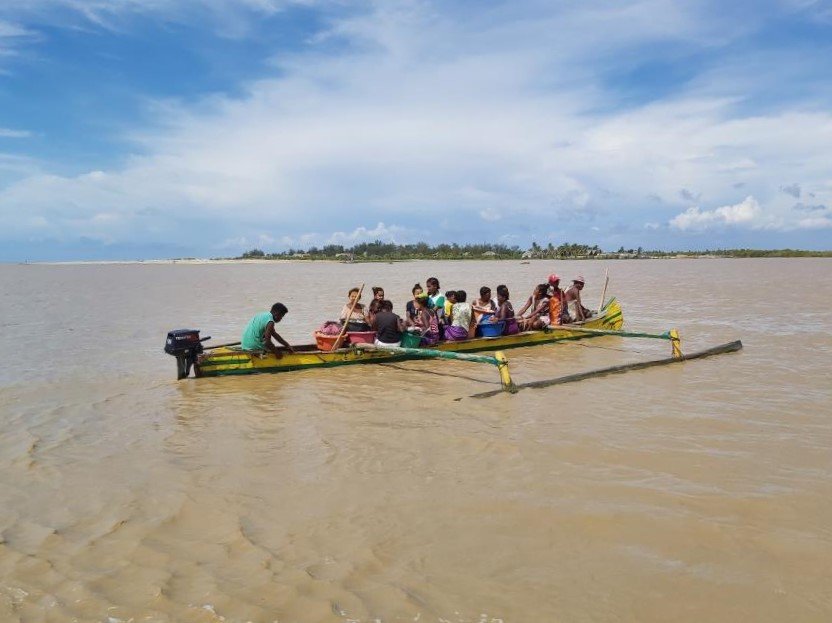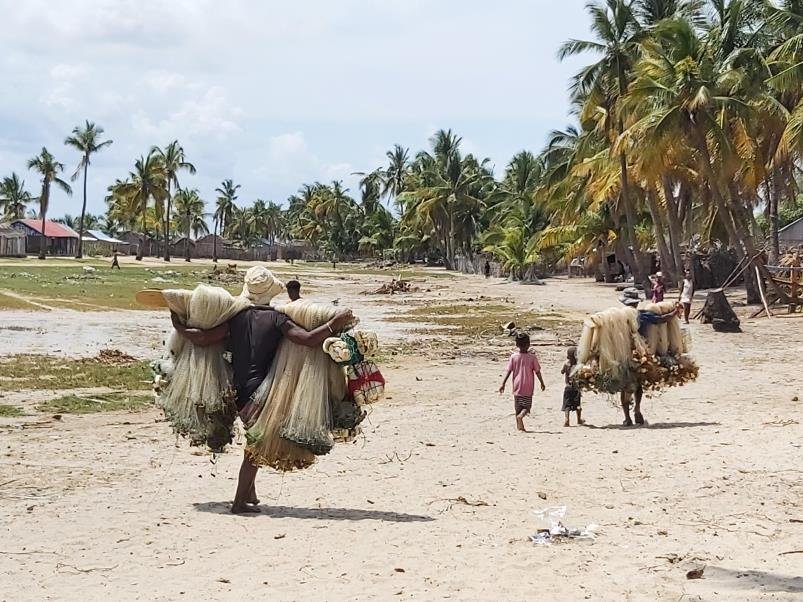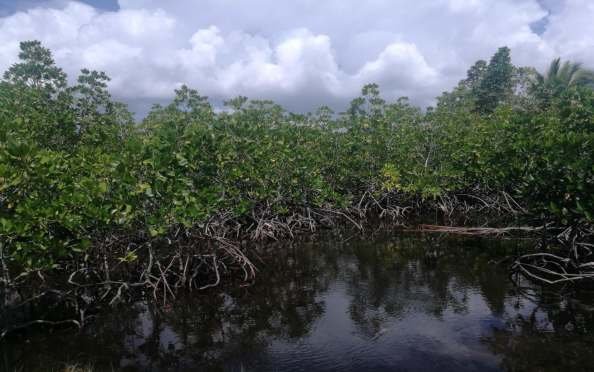|
Cycle 8 (2019 Deadline)
Improving mangrove forest carbon and socioeconomic data to improve management in Madagascar
PI: Razakamanarivo Herintsitohaina (herintsitohaina.razakamanarivo@gmail.com), University of Antananarivo Laboratory of Radioisotopes
U.S. Partner: Richard MacKenzie, U.S. Forest Service Institute of Pacific Islands Forestry
Project Dates: November 2019 - October 2021
Project Overview:
 | | Fieldwork: Means of transport Morondova - Betania. Photo credit: Dr. Herintsitohaina |  | | Fishermen going back home in Betania. Photo credit: Dr. Herintsitohaina |  | | Mangroves. Photo credit: Dr. Herintsitohaina |
Coastal Malagasy populations rely heavily on mangrove forests for food (fish, shrimp, and crabs), building materials, and fuel wood for cooking. Mangroves also protect these human populations from tsunamis and cyclones, as well provide climate change mitigation and adaptation by removing and storing large amounts of carbon (C) from the atmosphere. Despite these many benefits, overharvesting of trees for charcoal has resulted major deforestation rates and 20% loss of the country’s mangrove forests. Mangrove deforestation not only results in the loss of goods and services provided by mangrove forests listed above but also negatively impacts their ability to keep up with increased rates of sea level rise. Developing community-based management is key to conserving and/or restoring these tightly coupled human-natural systems, but the first steps are using surveys to identify how communities value mangroves economically, culturally, and ecologically and to examine how these social aspects influence important ecological structure (amount of C stored in mangroves) or functions (rate mangroves are accumulating sediment, burying C in their sediments, or rising in elevation relative to sea level rise).
The main goal of this project is to increase our understanding of how socioeconomic, sociocultural, communication, and decision-making contexts impact the ecological structure and functions of Malagasy mangroves, which can be capitalized for national policies as well as for the different strategies of stakeholders in environmental governance.
Project objectives:
(1) Quantify and compare carbon (C) stocks and sedimentation, C burial, and accretion rates between deforested and intact mangroves of different regions of Madagascar.
(2) Develop more accurate estimates of above-ground tree biomass through the creation of an allometric equation specific for Madagascar mangrove trees.
(3) Understand the social realities related to mangroves by dissecting and resituating the different contexts, practices, representations, and decision making processes.
(4) Attempt to identify how different social aspects from Objective (3) impact C stocks and sedimentation, C burial, and accretion rates from Objective (1).
Area of study: The project will focus on mangroves in the north (Ambanja) and south (Morondava/Belo Sur Mer) which represents Madagascar’s largest mangrove areas (24,000 and 26,400 ha, respectively), as well as being areas where trees are over harvested for charcoal and timber and community-based management actions to protect or monitor mangroves are being implemented. Belo Sur Mer mangroves are remote and relatively untouched, providing intact forested control sites.
The project closely relates to the mission of USAID’s Conservation and Communities Project (CCP), which is designed to improve conservation of Madagascar’s unique biodiversity while promoting resilient livelihoods for communities by providing them with a greater voice in the management of their natural resources, promoting sustainable community development, and creating jobs while providing alternatives to unsustainable resource use. Baseline social and environmental data generated from this project, as well as the support of communities in developing appropriate management and monitoring plans as planned under direct support from the U.S. Forest Service, will inform CCP’s Hay Tao and Mikajy projects. Results from this research effort will also be used to identify effective community-based management options that the different communities can adopt that also achieve improved results for sequestering, maintaining, or reducing greenhouse gas emissions that meet Madagascar government goals. Finally, baseline data can be used by the national coordination board of climate change carbon and REDD + (BNCCCC-REDD) for their national greenhouse gas communications and their Nationally Determined Contributions identified in the Paris Agreement of the UN Framework Convention on Climate Change.
Visit PEER Project blog for updates here.
Final summary of project activities
This PEER project was conducted in Mangrove forest in the Western part of Madagascar by three teams from University of Antananarivo with the support of USFS team and other partners for purposes of collecting three types of data: carbon data (ensured by LRI), social data (ensured by CERCOM) and economic data (ensured by C3EDM).The main challenge of the PEER team was to collect and combine carbon, social & economic data so it can later be used by the stakeholders for sustainable management of mangrove forest in Menabe Region. The project was conducted in 7 villages: Betania, Antanimanimbo, Andikà, Andranolava, Manahy, Menaky, Antsatrabo. Collection of ecological data was conducted in 33 plots of intact forest and 33 plots of degraded forest; collection of economic data was done by doing economic surveys with 256 peoples to identify perception of economic values of mangrove forest; and collection of social data was done via ethnographic approach, observation, and training conducted in each villages. At the conclusion of the project, the team outlined the need to (1) reinforce environmental education in Menaky , Andikà and Manahy; (2) reinforce reforestation in Manahy, Betania and Andranolava; (3) reinforce the work of stakeholders in Betania (4) continue stakeholders' mangrove management in Antsatrabo and Antanimanimbo and Andranolava; (5) consider a participative approach (6) mentor effective income activities in the villages. For the Menabe region, the project team outlined the need for a real application of existing law for Mangrove Forest, reinforcement of the management of income for local population, and the need to control people's migration.
In terms of future plans, the Carbon team and ISSEDD consortium are working with USFS partners on Carbon inventories in the Eastern. The PEER team plan to integrate PEER data with this work which should result in publication of another paper on allometric equation of other Malagasy mangrove species.
The project team shared the results of the project with the Malagasy stakeholders (Government, NGOs, students, researchers) during the National Celebration Day of Mangroves (National restitution) and the Regional restitution (Menabe Region). According to various exchanges between collaborators, they are planning to use this project's data or research in various ways such as mangrove management and conservation at various levels (i.e. village or community level, local or municipal)..
. Back to PEER Cycle 8 Grant Recipients
|
|
|
|






